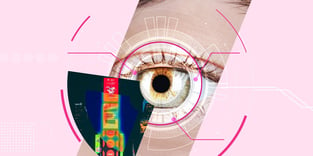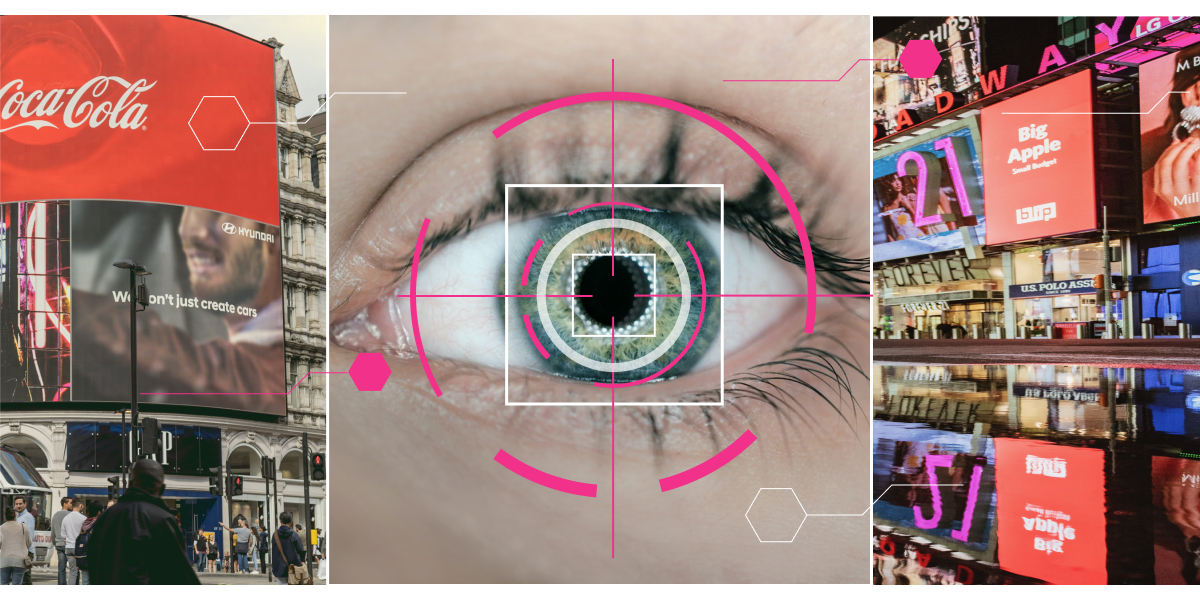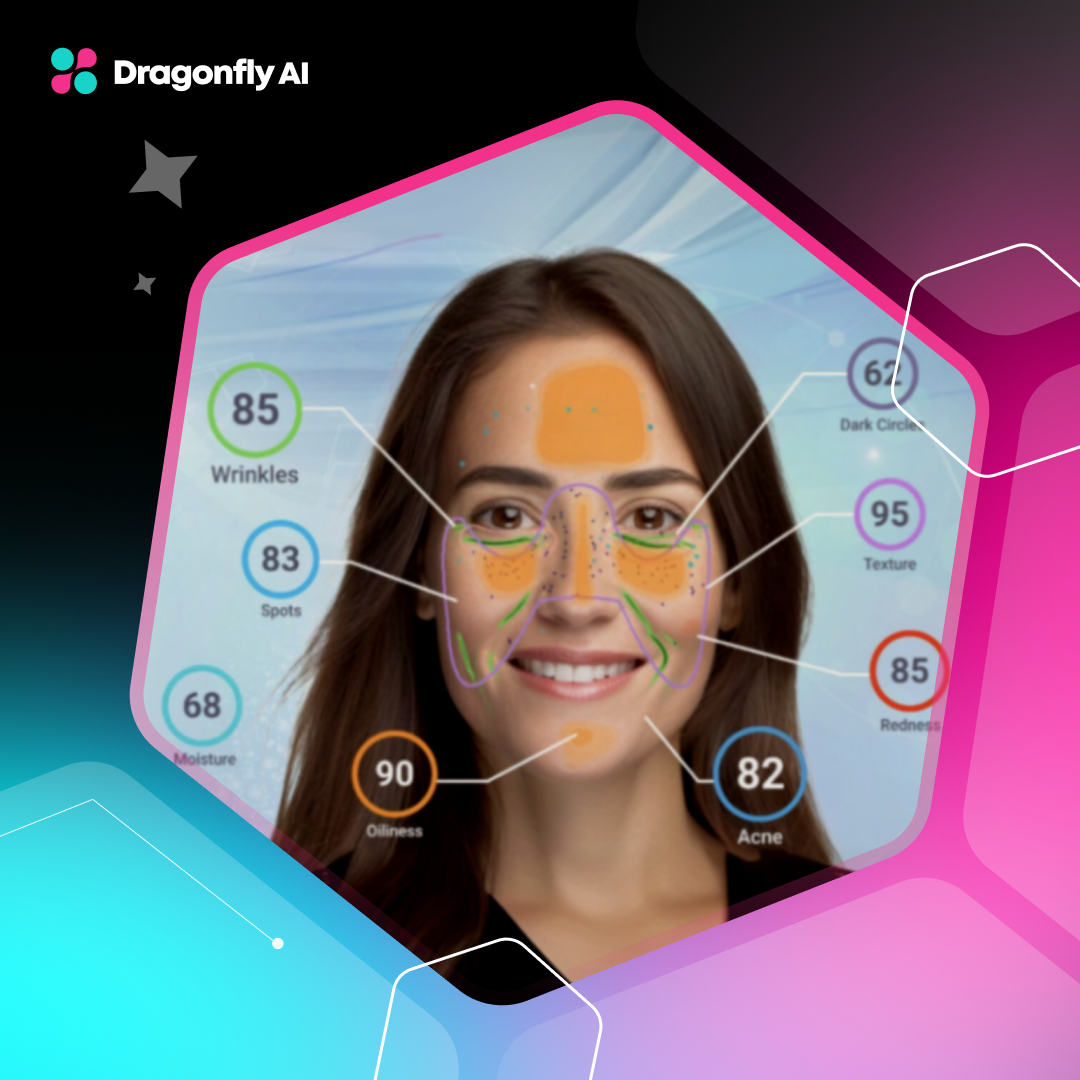If you’ve ever wondered what your eyes reveal about you, then you might want to learn about eye-tracking technology. It captures where you look, how long you focus, and what you skip past entirely with some serious precision. Recording these movements means researchers can understand attention patterns that even you might not be conscious of. Now, AI is enhancing the field, turning simple eye movements into insights about human behavior and decision-making.
What is AI Eye Tracking?
Eye tracking focuses on three key behaviors: fixations, saccades, and pupil dilation. Fixations occur when your eyes pause on a specific point for 100 to 500 milliseconds, suggesting your brain is processing that information.
Saccades are the quick jumps between fixations, typically lasting 20 to 40 milliseconds, when your brain takes in very little information. Pupil dilation—the changing size of your pupils—often indicates emotional response, cognitive load, or interest level.
The history of eye tracking dates back to the late 1800s when French ophthalmologist Louis Émile Javal first observed reading patterns. The first mechanical eye tracker was developed by Edmund Huey in the early 1900s, a cumbersome device involving a contact lens with an attached pointer. Early systems were highly invasive, but technology has evolved since then.
Today's eye tracking systems fall into three main categories.
- Screen-based trackers are fixed to monitors and capture eye movements as users view digital content.
- Wearable systems are often built into glasses and allow for natural movement and real-world observation.
- Webcam-based eye tracking is the newest version and uses standard webcams instead of specialized hardware, making it accessible to virtually anyone with a computer.
How Eye Tracking Technology Works
Most modern eye tracking systems use near-infrared light and specialized cameras to track eye movement with remarkable precision. The technology works by directing invisible infrared light toward the eye, creating reflections on the cornea (the clear outer layer of your eye). These reflections, along with the position of your pupil, are captured by infrared-sensitive cameras.
Corneal reflection tracking
The most common method, known as corneal reflection tracking, relies on the contrast between these reflections and the pupil. When infrared light hits your eye, it creates a small, bright reflection on the cornea called the "glint" or "first Purkinje image."
The system measures the changing relationship between this glint and your pupil center as your eyes move. Since the corneal reflection stays relatively stable while the pupil moves, this difference helps calculate precisely where you're looking.
Different system types
The hardware varies by system type. Screen-based trackers place cameras and infrared illuminators below or inside the monitor. Wearable systems, like glasses, incorporate miniaturized versions of these components to capture your field of view along with your eye movements. Webcam-based systems use your computer's camera but sacrifice some accuracy compared to dedicated hardware.
Knowing the metrics
Once your eye movements are captured, the system processes the data into several key metrics. Basic measurements include fixation count (how many times you focused on something), fixation duration (how long you looked at it), and saccade paths (how your eyes moved between points). More complex metrics track pupil dilation, blink rate, and scan patterns, which together create a comprehensive picture of your visual attention.
AOIs
Researchers often define "areas of interest" (AOIs) on images or screens to analyze which elements attract attention. Time-to-first-fixation reveals how quickly an element draws your eye, while total fixation time shows overall engagement.
Heat maps provide visual representations of this data, using color gradients to show where attention concentrated most intensely. Gaze plots display the sequence and duration of fixations, revealing the journey your eyes took through the visual content.
Attention maps
Powered by AI, attention maps offer an alternative to traditional eye-tracking software. They predict the areas of creativity that people are most likely to see and where they're least likely to look. These maps can reveal the exact gaze path so brands can optimize their content accordingly.
For instance, some AI systems use red-blue color gradients to visualize where a customer's attention will be subconsciously drawn within the first zero to two seconds of seeing an image. Another visualization approach is opacity mode, where attention-grabbing regions are highlighted while areas with low visual interest fade into the background.
These AI-driven attention maps offer a faster, more affordable way to understand customer engagement without requiring specialized eye tracking hardware, making visual attention analysis accessible to more businesses.
AI's Role in Advancing Eye Tracking
AI has evolved eye tracking from a simple measurement tool into a predictive system. Traditional eye tracking provided raw data about where people looked, but AI can now interpret why they looked there and what that means about their thinking, emotions, and likely behaviors.
Machine learning algorithms analyze eye movement patterns to recognize complex visual behaviors that humans might miss. By training on thousands of eye tracking sessions, these algorithms can identify patterns associated with different cognitive states.
For instance, AI can now differentiate between reading, searching, and problem-solving behaviors based solely on eye movements. It can even detect subtle signs of confusion, interest, or cognitive overload that would be invisible to human observers.
How computer vision changed the game
Computer vision has improved eye tracking accuracy and reliability. Advanced object recognition allows systems to track exactly what you're looking at in dynamic scenes, not just coordinates on a screen.
In layman's terms, that means eye tracking can now work in uncontrolled environments with moving objects, changing lighting, and natural head movements. AI compensates for these variables, making tracking possible during everyday activities rather than just in laboratory settings.
Guessing your next move
Perhaps most impressively, predictive modeling has moved eye tracking beyond simple observation to anticipate user actions. By combining eye tracking data with contextual information, AI can predict:
- What you'll look at next
- What information you need
- What decisions you're likely to make.
These predictions happen in real-time, allowing systems to adapt interfaces, adjust content, or provide assistance at the right moment.
From labs to marketing teams and beyond
The automation of analysis has made eye tracking accessible to non-experts. What once required specialized knowledge and hours of manual coding can now be processed instantly by AI systems.
Complex metrics like cognitive load, reading comprehension, and emotional engagement are calculated automatically, with clear visualizations that anyone can understand. The democratization of eye tracking has expanded it beyond research labs into everyday business applications.
AI has also enabled cross-modal integration, connecting eye tracking with other data sources like EEG (brain activity), facial expressions, speech, and biometrics. Analyzing these streams together allows AI to create a more complete picture of human experience.
For example, it can correlate specific eye movements with changes in brain activity or stress levels, revealing connections between visual attention and emotional states that wouldn't be apparent from eye tracking alone.
Applications Across Industries
There are many industries where eye-tracking technology holds plenty of weight, whether you’re trying to understand how a consumer uses a product or you’re creating a website and want to improve usability.
Marketing and consumer research
Eye tracking has changed how companies understand consumer behavior by revealing what traditional research methods cannot. When shoppers browse store shelves or scroll through websites, their eyes tell a story their words never could.
Retail companies can use eye tracking to optimize product packaging and shelf placement and can see as much as a 20% increase in sales. Similarly, website owners can see exactly which elements grab attention first and which are ignored completely.
Decision-making studies reveal fascinating insights about how we choose products. One study found that people look most at artwork and furniture rather than floors and walls when looking to buy a home.
Eye tracking also tests advertising effectiveness before campaigns launch. For instance, research has shown that eye-tracking can help identify which elements of an advertisement capture the most attention. Analyzing gaze patterns helps marketers determine whether viewers focus on the product, branding, or background elements.
Studies show that ads and marketing materials optimized using eye-tracking insights (e.g. placing key visuals or text in spots proven to draw the eye) can boost viewer engagement by up to 50%.
UX/UI design
Web designers once relied on guesswork to determine whether users would find navigation intuitive. Now eye tracking shows exactly what works and what doesn't. An ecommerce site might discover that visitors aren’t seeing their checkout button despite its prominent placement. The heat map may reveal users' eyes followed an F-shaped pattern, completely missing the button's location. Moving it to align with natural viewing patterns could increase conversions.
Eye tracking identifies usability problems that users never report. For instance, research has shown that eye-tracking can uncover issues such as confusion over navigation or layout by revealing where users look and how they interact with content. As a result, designers can make informed adjustments to improve usability.
Mobile app developers use eye tracking to understand the unique constraints of small screens. A food delivery app might discover that users spend excessive time searching for the restaurant categories button. By tracking exactly where users looked first, they could reposition important navigation elements to match natural eye patterns, reducing search time and increasing satisfaction scores in the process.

Video production and eye contact
Eye contact correction has become a significant application of eye tracking technology. The technology analyzes eye movements and creates the illusion of maintaining direct eye contact with the camera, which is necessary for creating professional and engaging video presentations.
Modern AI-powered systems can automatically adjust where a person appears to be looking, eliminating the awkward appearance of reading notes or looking away that plagued earlier video production. Real-time gaze correction helps presenters achieve greater professionalism in business presentations, online courses, and social media content.
The applications extend beyond traditional video. In virtual reality and augmented reality environments, eye tracking helps characters maintain realistic eye contact with users to create more immersive experiences. Game developers use similar technology to make characters respond naturally to player gaze, adding a new dimension of realism to interactive entertainment.
As remote work and video communication continue to grow, eye contact correction technology will become an increasingly valuable tool for effective digital communication.

Challenges and Limitations
Despite its potential, eye tracking technology faces some challenges.
How accurate?
Accuracy remains a persistent issue, particularly in less controlled environments. Traditional eye trackers work best when participants remain relatively still, facing forward with minimal head movement. This creates an artificial situation that may not reflect natural viewing behavior. While newer systems compensate for some head movement, they still struggle with quick or extreme movements.
Keep it physical
Physical limitations affect specific populations. People with certain eye conditions, like nystagmus (involuntary eye movements) or ptosis (drooping eyelids), may be difficult to track with accuracy. Glasses and contact lenses can interfere with infrared reflection patterns, though modern systems handle these better than earlier versions. Even factors like eye color can impact tracking quality, with darker irises sometimes proving more difficult to track than lighter ones.
It’s all in the interpretation
Interpretation limitations pose perhaps the biggest challenge. While eye tracking shows where someone looks, it doesn't definitively explain why. Looking at something doesn't necessarily mean paying attention to it (a phenomenon called "looking without seeing"), and avoiding looking at something doesn't mean lacking awareness of it (we often use peripheral vision). Context matters, and incorrect assumptions about the meaning of eye movements can lead to flawed conclusions.
Privacy
Privacy concerns grow as eye tracking becomes more widespread. Our eye movements reveal surprisingly personal information, from reading difficulties to neurological conditions, sexual orientation, and even political leanings. As this technology moves from research labs to everyday devices, questions arise about data ownership, consent, and potential misuse. Who owns your gaze data if collected by your smartphone or smart glasses? What happens if insurance companies or employers gain access to this information?
Cultural differences
Cultural differences in eye movement patterns add complexity to global applications. Research shows significant variations in how people from different cultures scan faces, read text, and process visual information. These differences mean systems trained primarily on Western participants may misinterpret eye movements from people with different cultural backgrounds, potentially encoding bias into the technology itself.

Future Developments
Eye tracking technology has evolved beyond its origins as a specialized research method, becoming a window into how we see and interpret the world. When combined with AI, it now provides unprecedented insights into human decision-making and behavior.
In the attention economy, where brands have seconds to engage customers, eye tracking provides important data about what truly captures interest. As the technology becomes more accessible through smartphone integration and webcam-based solutions, we'll see it transform from specialized equipment to a standard feature in everyday devices.
The future belongs to those who stay at the forefront of these developments, using eye tracking to gain deeper insights, enhance user experiences, and create more compelling content that truly connects with its audience.
What About Attention Maps?
Attention maps are powered by AI and offer an alternative to traditional eye-tracking software. They predict the areas of creative that people are most likely to see and where they're least likely to look. These maps can reveal the exact gaze path so that brands can optimize accordingly.
Dragonfly AI heatmaps use a red-blue color gradient to instantly visualize where a customer's attention will be sub-consciously drawn to within the first 0-2 seconds of seeing the image. You can also lean on opacity mode, where attention-grabbing regions are moved into the light and regions with low saliency are pushed into the shadows.
Dragonfly AI attention maps offer a faster, more affordable way to learn about your customers and see what engages them.
The Window to our World
Eye tracking technology has evolved from a specialized research tool to a window into how we see and process the world. Merging with AI offers unprecedented insights into our decision-making and behavior. As it becomes more accessible and integrated into everyday technology, eye tracking will fundamentally change how we interact with devices and how they understand us.



